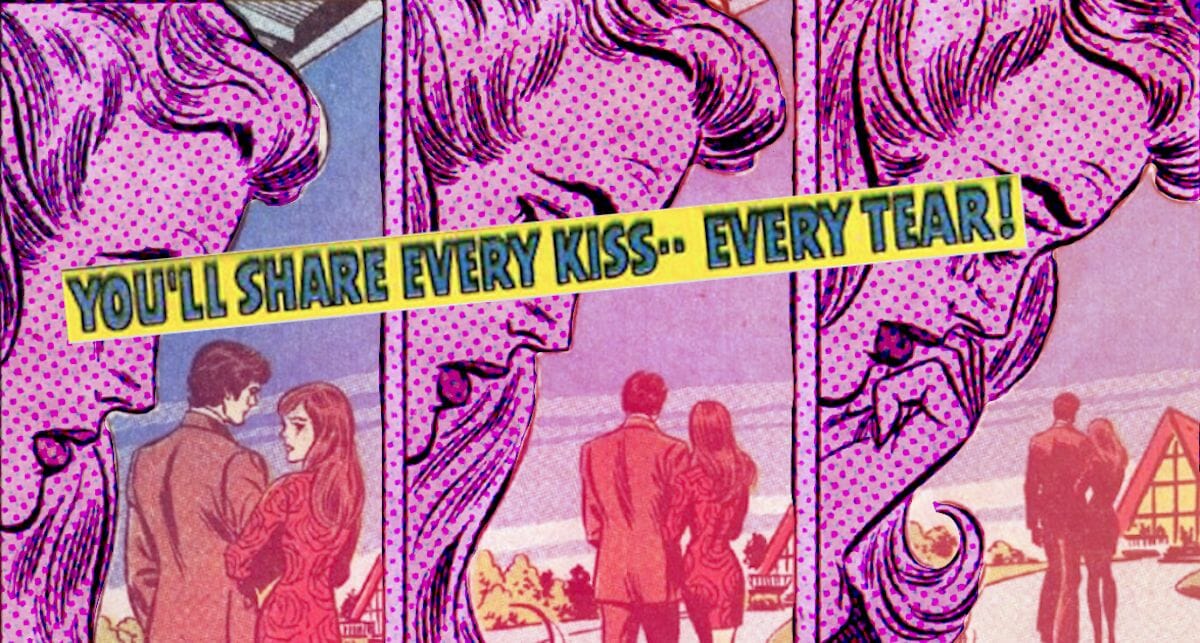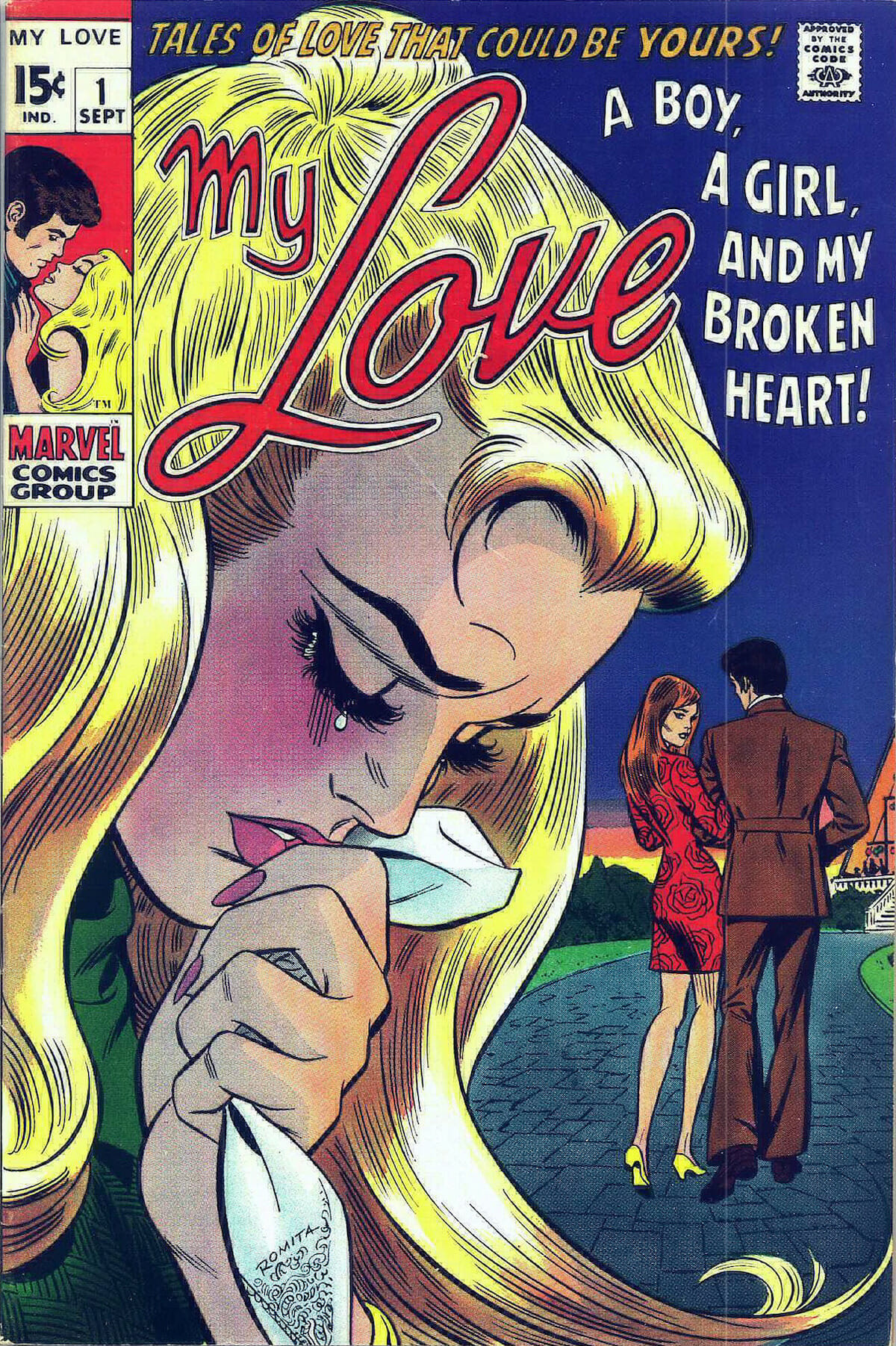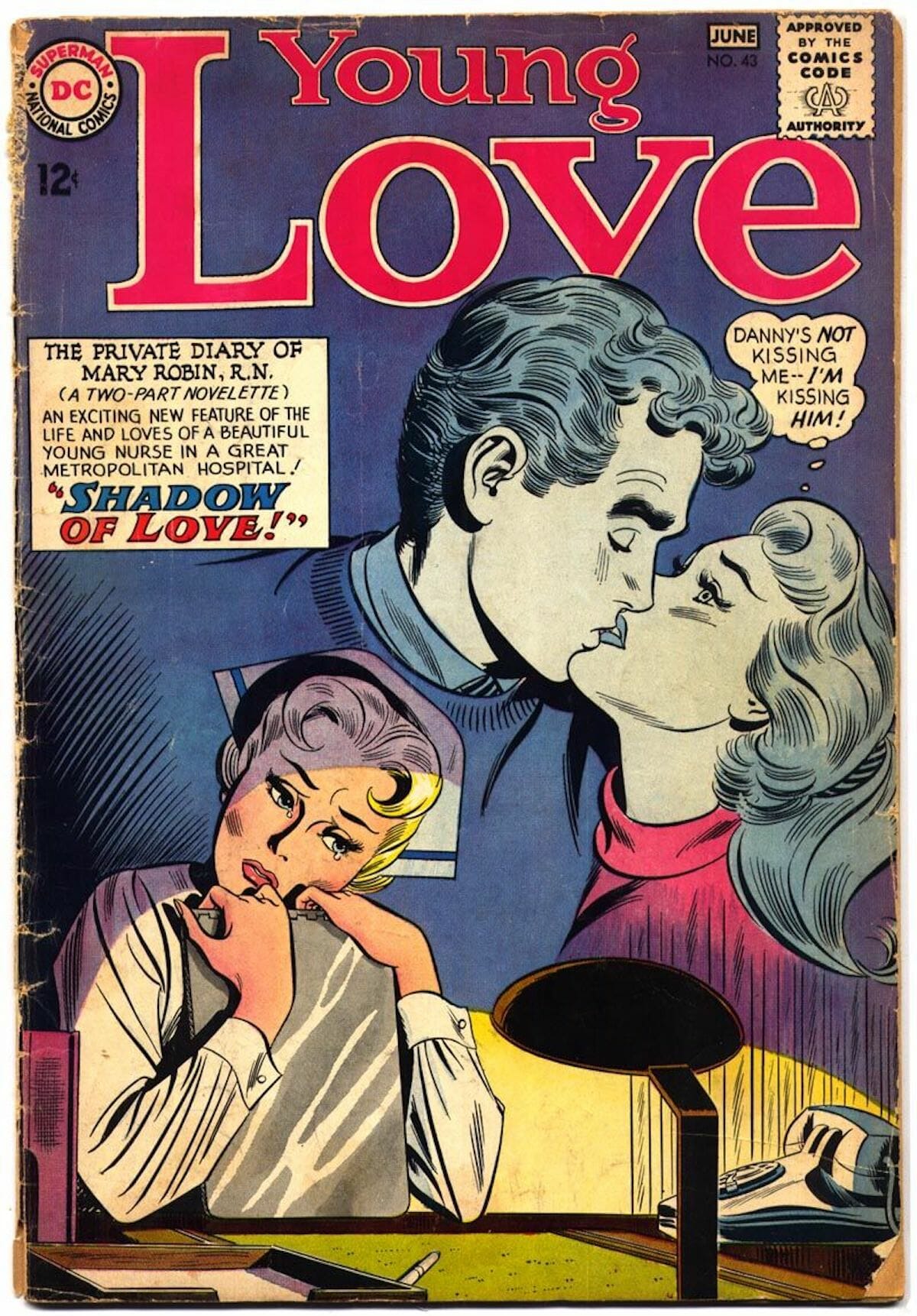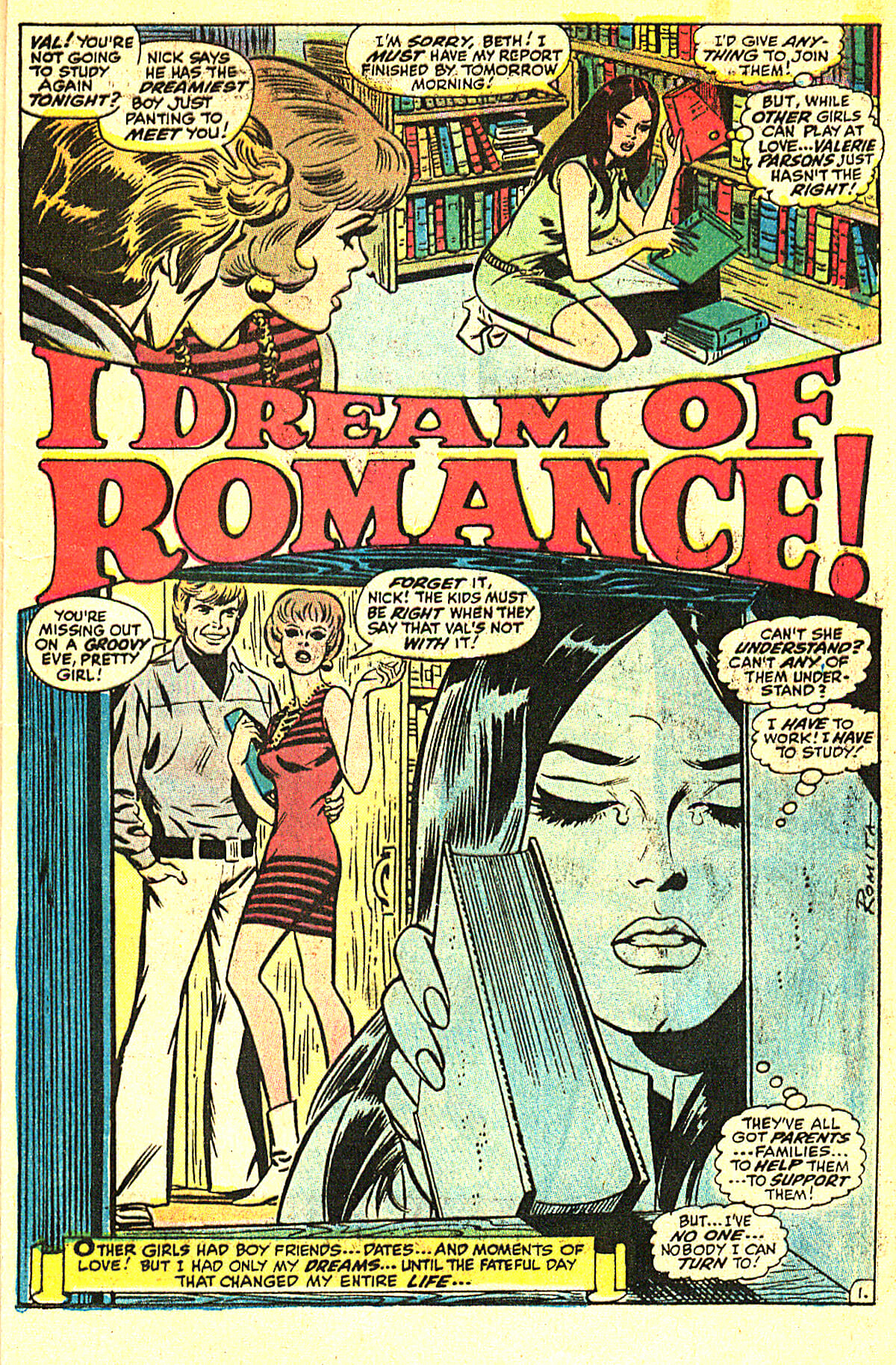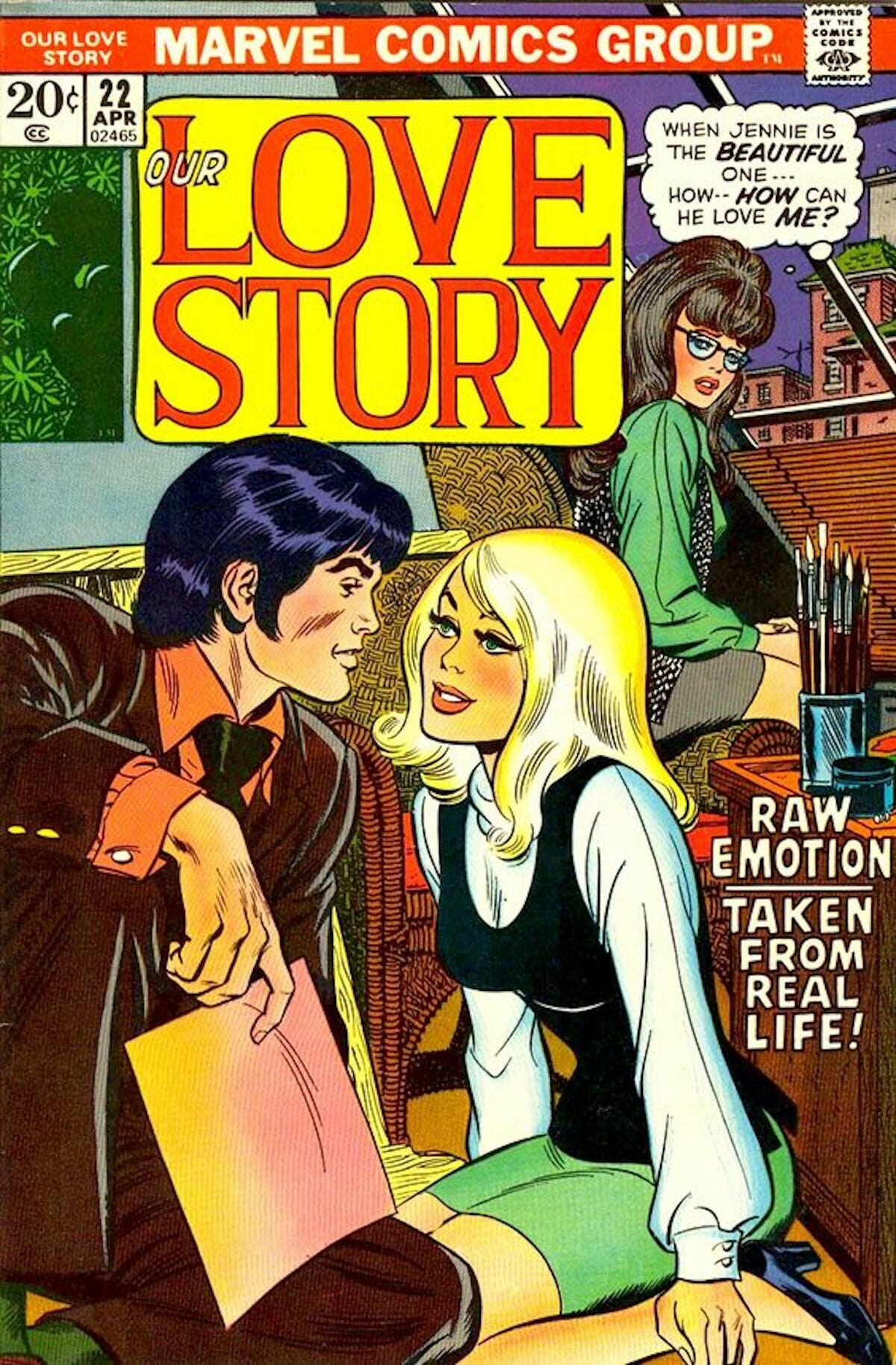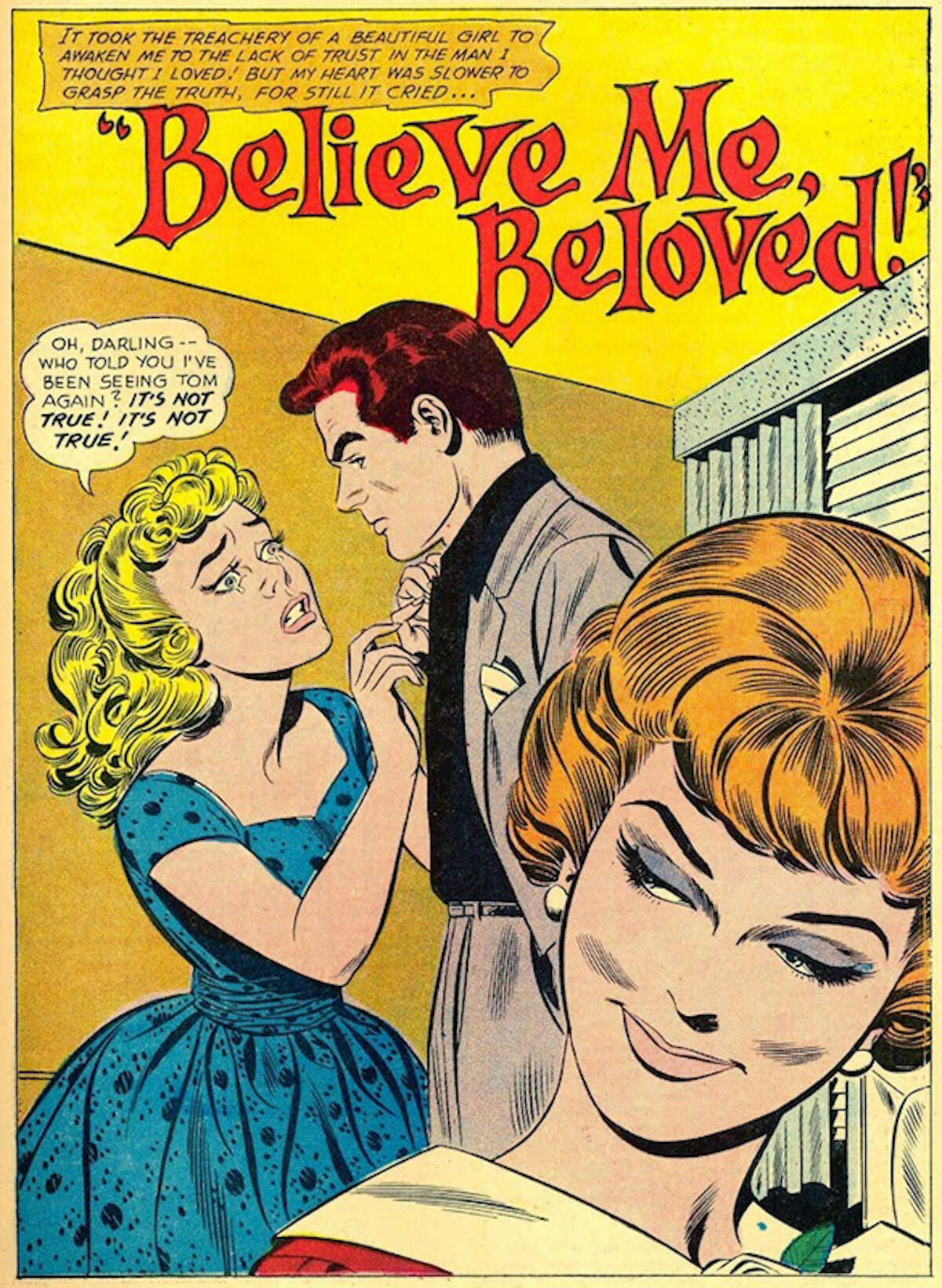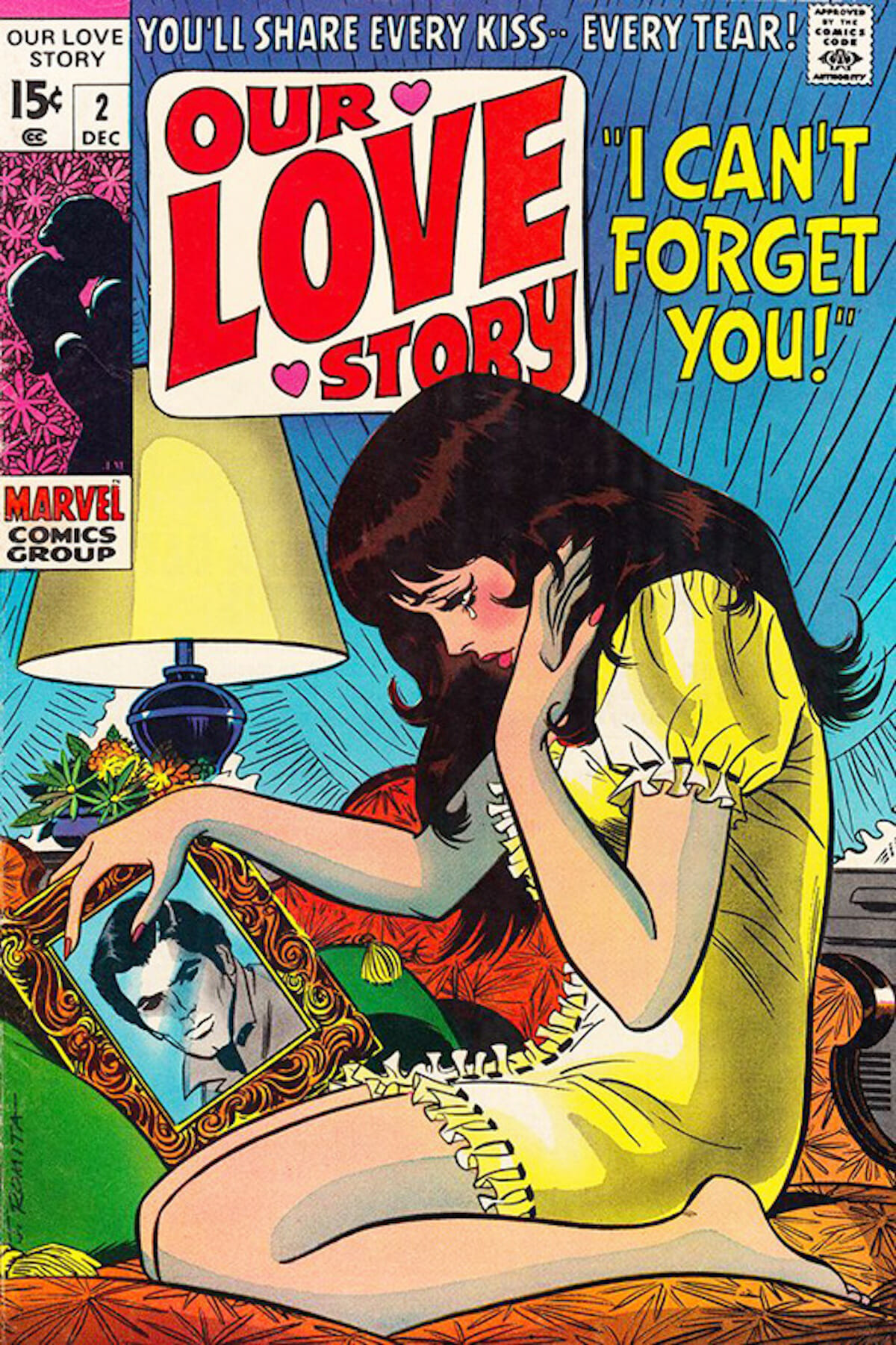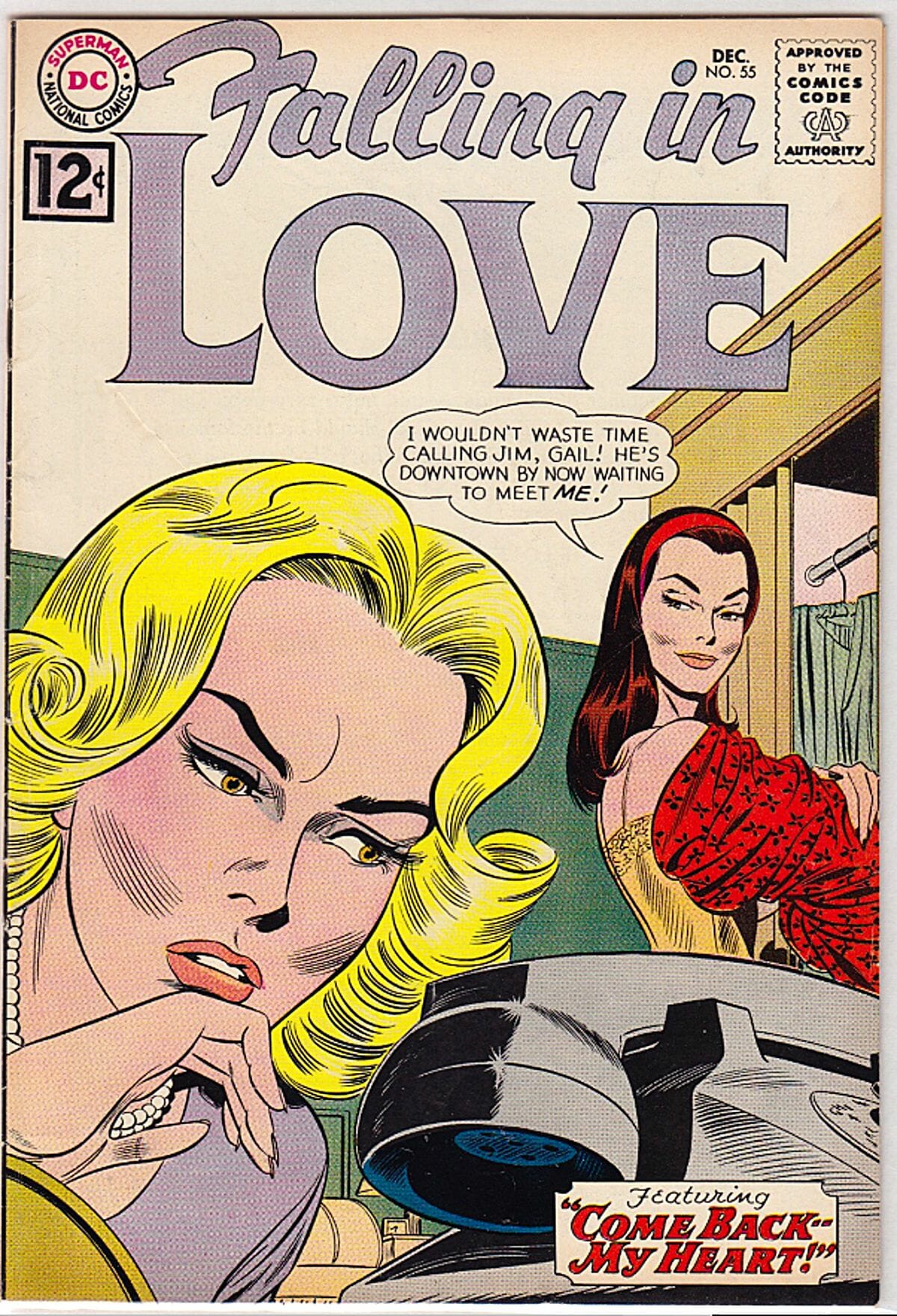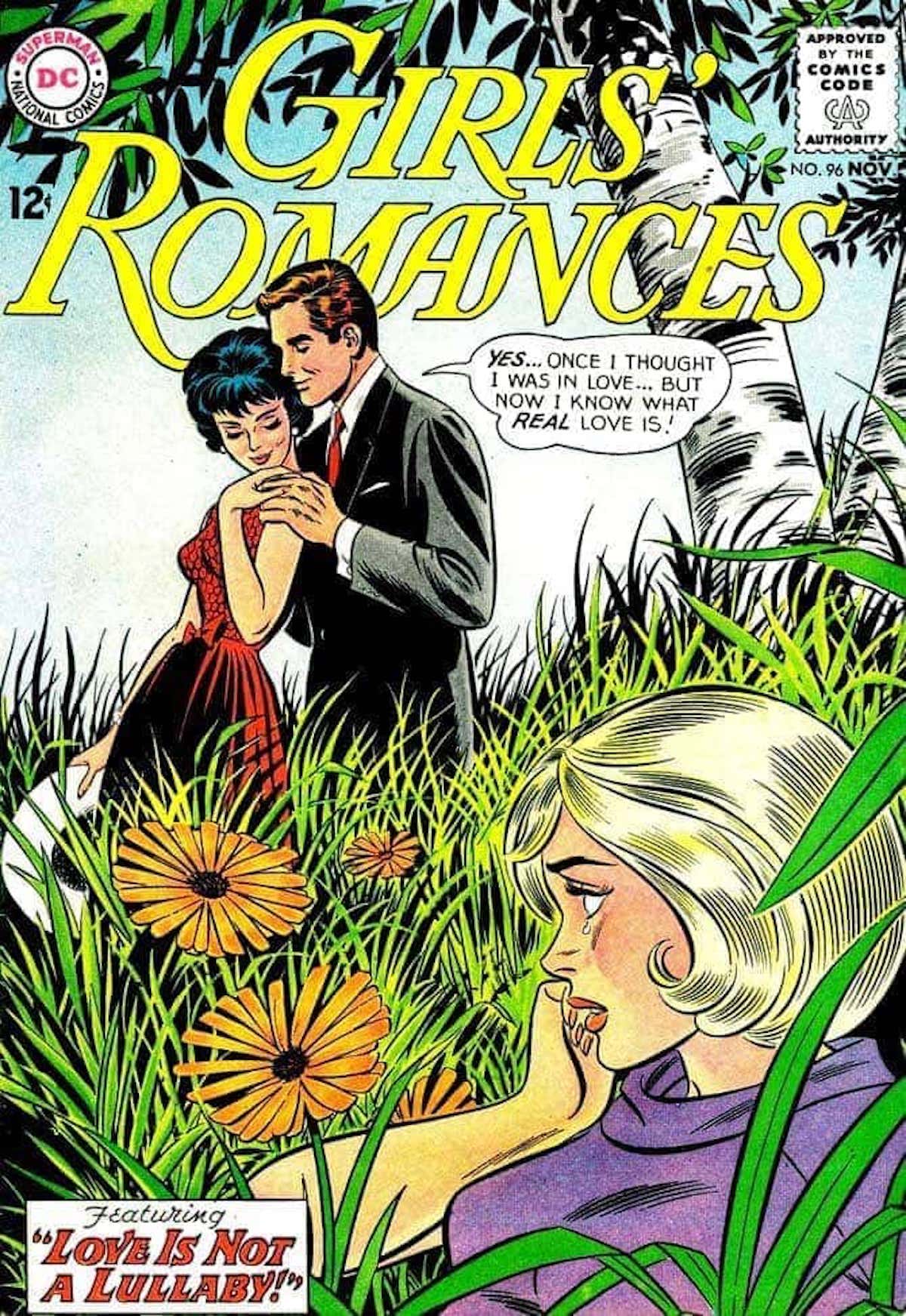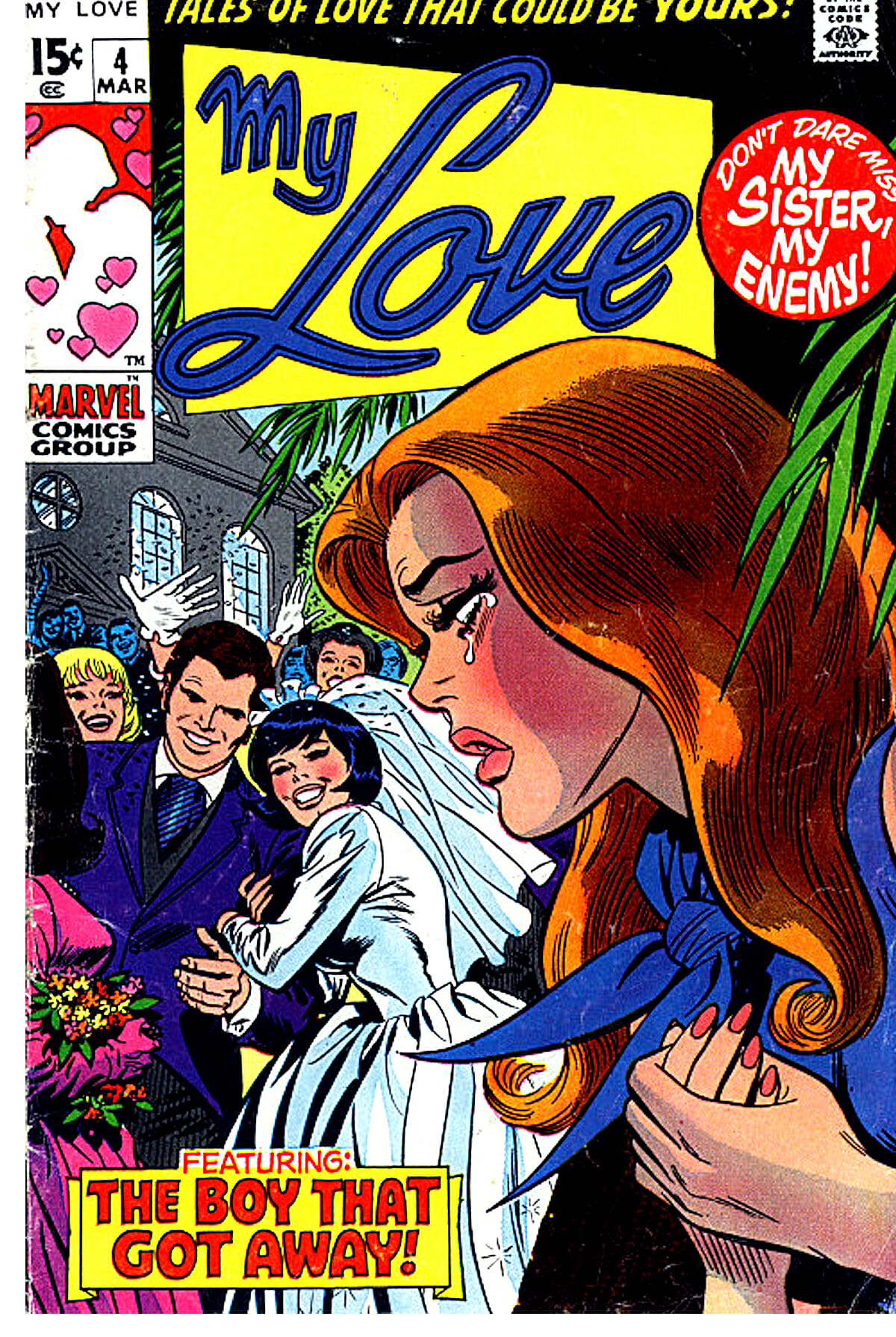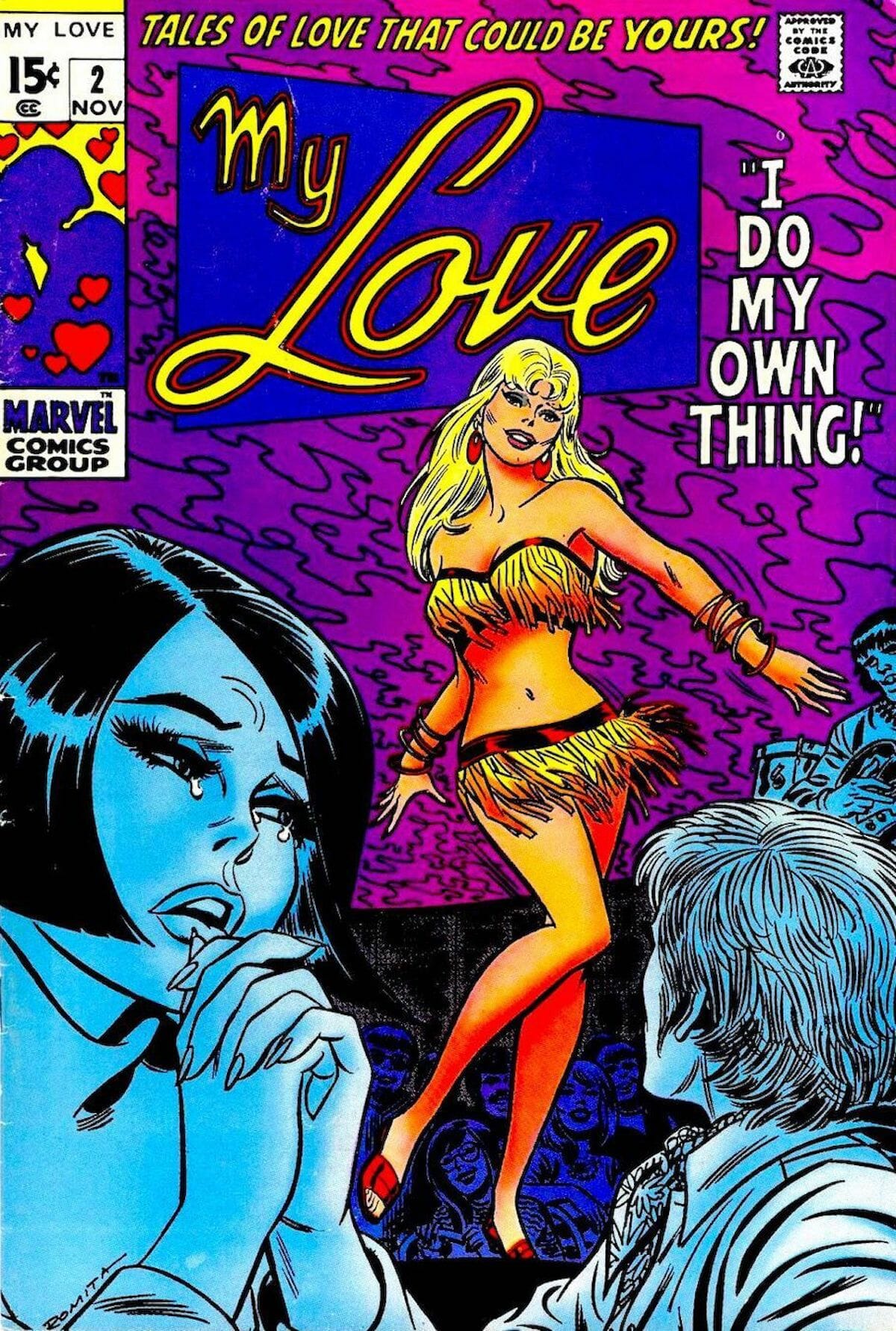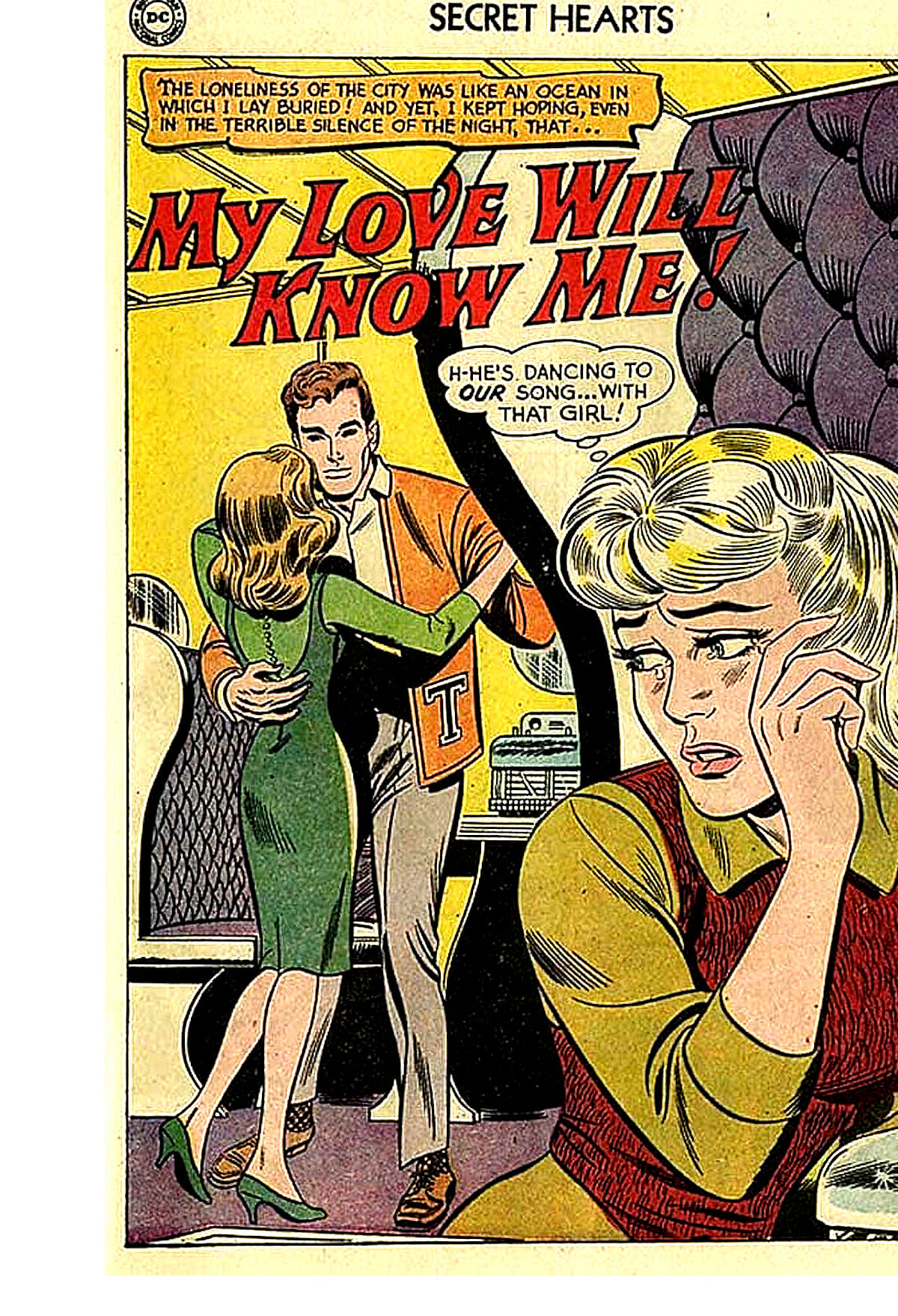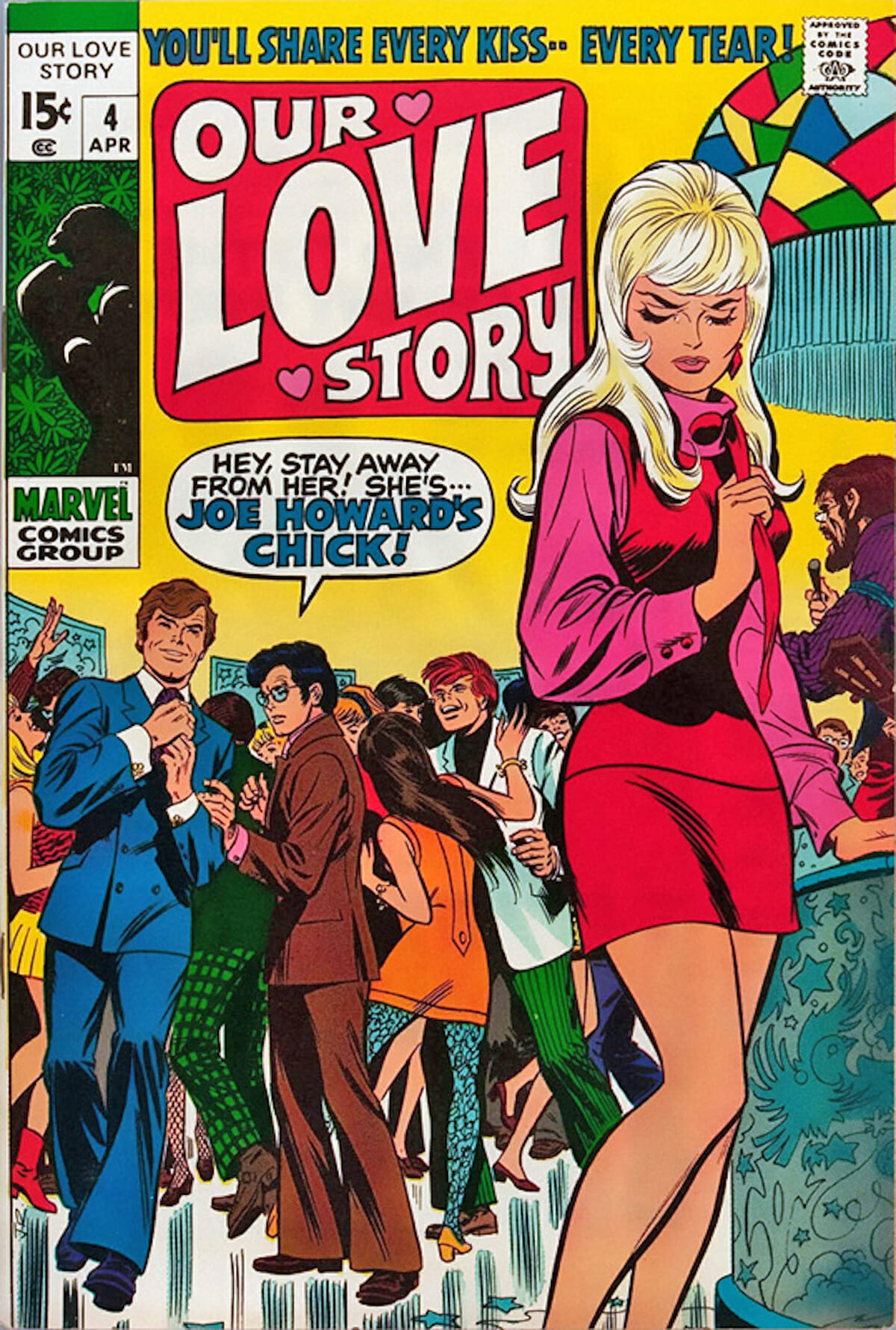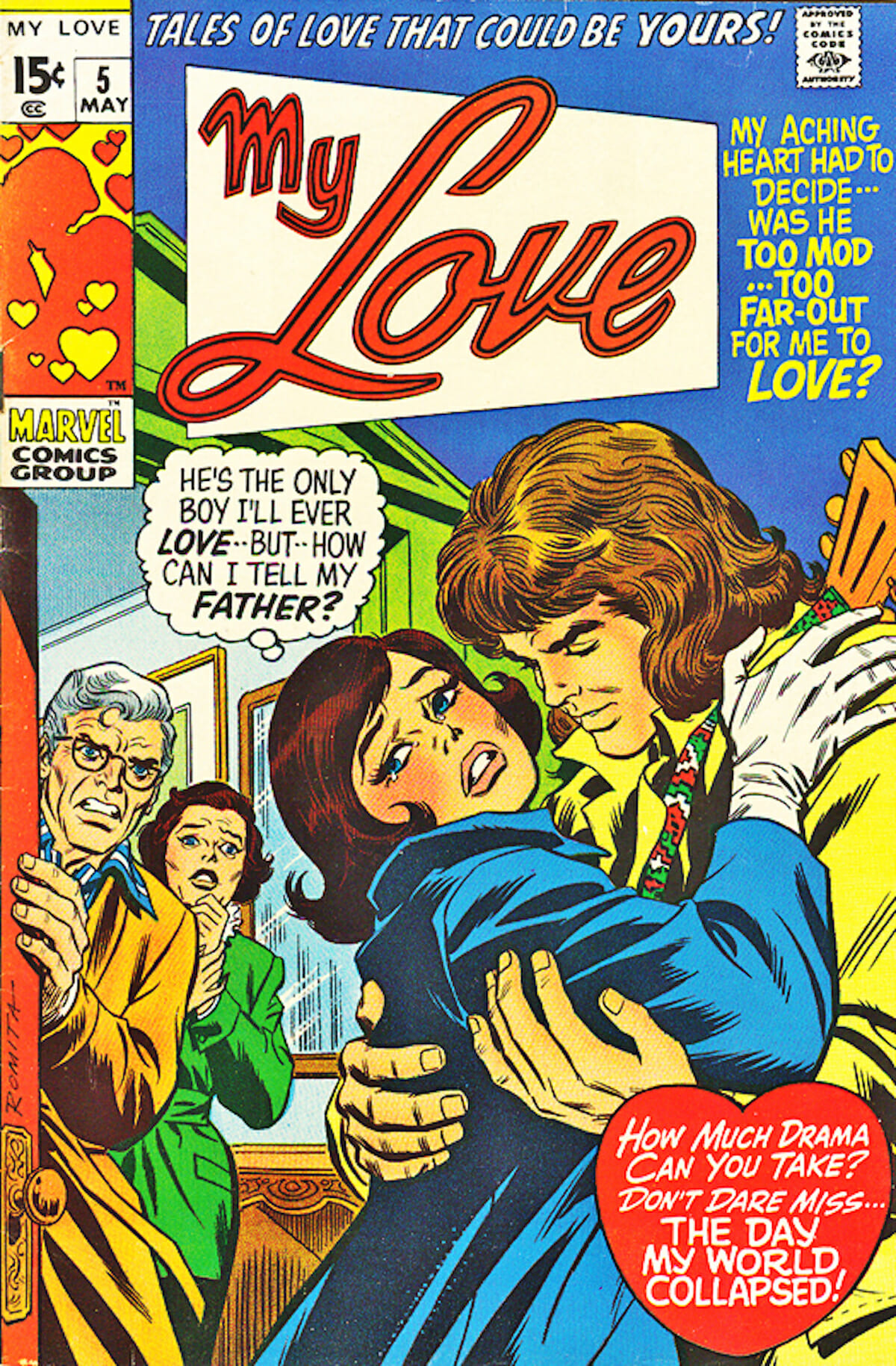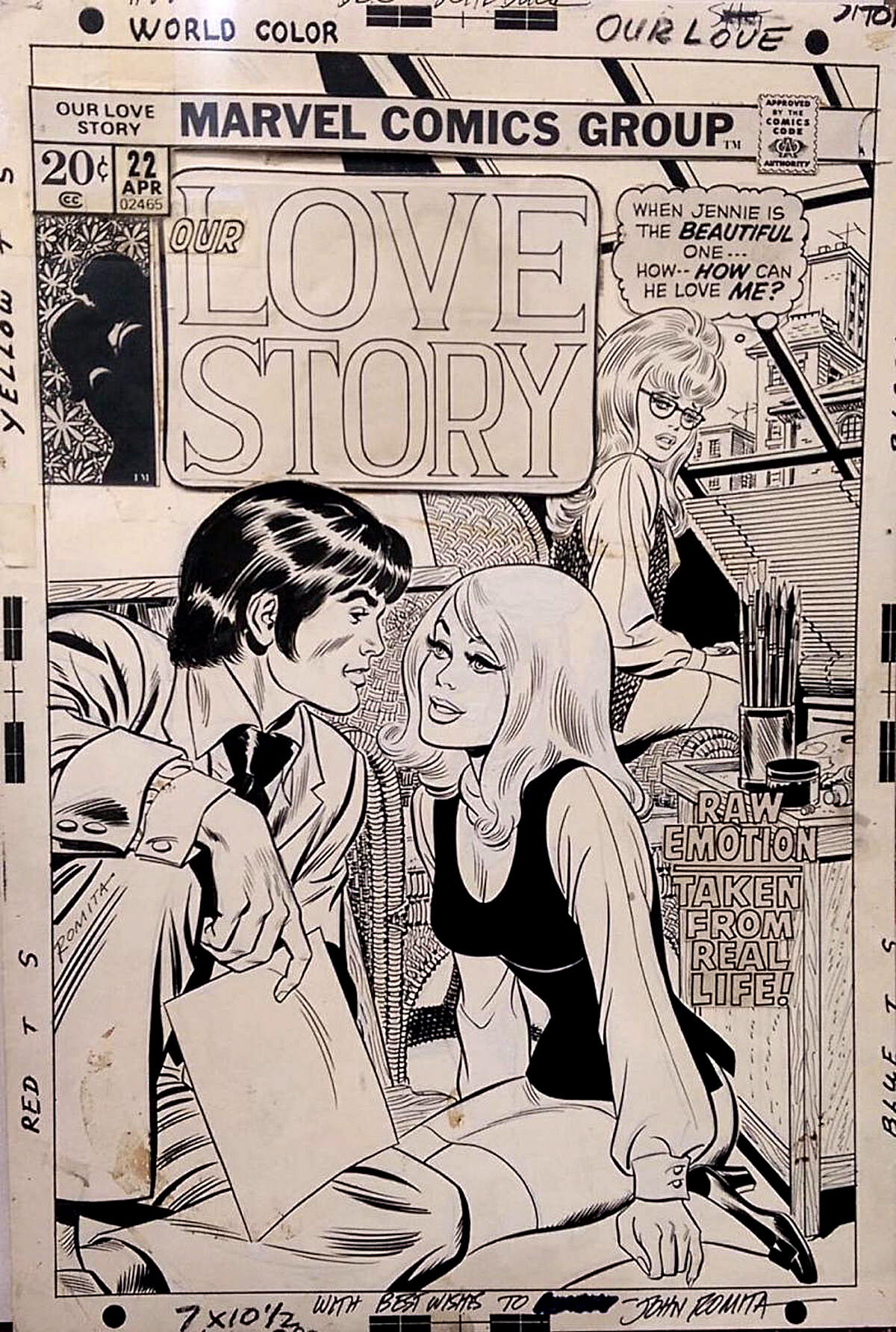When John Romita Sr. took over Marvel’s The Amazing Spider-Man in 1966, he essentially flipped the script from co-creator Steve Ditko’s original approach; immediately ramping up the soap opera aspect — arguably the series’ secret weapon — and bringing new glamor and relationship pathos to Peter Parker’s life that readers immediately responded well to. It was an instant remix of the core concept that would define the character moving forward, and one that owed everything to Romita’s experience as a romance comics artist.
Almost ten years before Romita took over Marvel’s friendly neighborhood wall-crawler, he was working regularly at DC Comics as one of the most high-profile artists on their National Romance Group line of titles. It was the latest direction for the artist, who’d been working in comics since 1949 in a variety of genres; he’d worked on superheroes, sci-fi, and war comics as publishers tried desperately to find the next big thing. By 1958, however, he was working exclusively for DC on what was quickly becoming a mainstay of the industry: the romance genre.
What might be somewhat unexpected is how recent romance comics were by the time Romita started this particular era of his career. Young Romance, the first U.S. romance title — created by Jack Kirby and Joe Simon, the men behind Captain America — had only launched 11 years earlier, in September 1947, becoming an instant hit with roughly a million copies selling monthly. (Not too shabby for an idea Simon once said he came up with because “it was about the only thing that hadn’t been done” in comics at the time.)
By 1950, the genre had blown up, with more than 100 titles on newsstands, each with an appropriately wonderful and melodramatic name such as My Secret Affair, My Life True Stories in Pictures, and Secret Hearts — the last of which was one of DC’s line of romance books, overseen initially by editors Jack Miller and Phyllis Reed. The two also oversaw Heart Throbs, Girls’ Love Stories, Girls’ Romances, and Falling in Love; all of these, from 1958 through 1965, would feature some Romita artwork in some shape or form, highlighting his success within the line, and genre as a whole.
It’s easy to see why Romita was a favorite of editors and readers alike. It’s not merely that his style — influenced by contemporary mainstream magazine and advertising illustration, another field that Romita dabbled in between comic gigs — was so attractive, although it undoubtedly was; his characters were attractive in a classic mid-century fashion, which managed to be wholesome and sexy at the same time, with neither element overpowering the other. Readers could imagine themselves falling for Romita’s various lovers, making it so much easier for them to buy into the stories the characters appeared in.
It feels dismissive to describe Romita’s romance comics as “good girls” art, or cheesecake, but it’s not an entirely misguided comparison; they may be more realistic than, say Dan DeCarlo’s Archie artwork of Betty and Veronica, or the airbrushed pin-ups of Olivia De Baradinis, but Romita’s women are just as firmly fantasy figures and created to be exactly that, even in stories ostensibly geared towards female readers.
Beyond his lush line work, Romita had something else going for him that many of his romance artist contemporaries didn’t: a genuine appreciation and love for comics as a medium. Romita has talked in multiple interviews about the comics he read as a kid, and how they shaped his understanding and use of the format with repeated mentions for Milton Caniff’s Terry and the Pirates and Jack Kirby’s earliest work, and it’s something that shows even in Romita’s own relatively early work.
“When Jack Kirby’s Captain America came out, I was ten years old and telling my friends, ‘See what he’s doing here? See how he’s got the guy popping out of the panel? He’s making it look like it’s coming out of the page!’… When I started drawing, I was already aping professional tricks,” he told Comic Book Artist in 2002. The result was, as he put it at the time, an ability to create “a visual interest in marginally interesting stuff, on the dull pages. When a writer has a dull stretch in a story, I can make it more interesting than it is by the visuals.”
That was a trick he’d employ multiple times in his romance work, where the writing was, shall we say, occasionally repetitive and slow-moving, to be polite. There were, after all, only so many ways the same writers could play with the same elements over and over again, and each issue of National’s Romance Group required multiple stories per issue. Beyond simply drawing glamorous and exquisitely rendered characters in the full flush of emotion, Romita consistently elevated the material he was working on, transforming the mundane and generic into something that felt almost worthy of the beautifully overwrought, tear-stained titles of each installment. (“The Hunted Heart!” “Love Looked The Other Way!” “Take My Heart With You!” Every single one, ending with an exclamation point for emphasis of just how intense the emotion is.)
This effort took its toll on Romita. As DC slowed down production on its romance titles — excessive inventory of unused material all but halted production entirely by 1965 — he started planning an escape from comics altogether, via a move into advertising. “They were going to pay me $250 a week. I’d made just over $200 a week with the romance [comics] but only by killing myself,” he explained in the 2002 John Romita Sketchbook.
It didn’t take, of course; instead, Stan Lee called and offered him near-carte blanche if he’d move to Marvel. Romita accepted, of course, starting a professional association that included a staff position (Romita became Marvel’s official art director in 1973, and stayed as such for two decades until his official retirement) and reputation-making work on Spider-Man and beyond.
For many, John Romita Sr. is Marvel, in much the same way that Kirby is, or John Buscema. Almost all of his tricks and skills, however, were honed in the decade prior, bringing romance and glamour into readers’ lives. It’s time that period was recognized for its importance to his career, yes, but also what it meant for the House of Ideas and, as a result, the depiction of love and drama in popular culture as it exists today overall.
